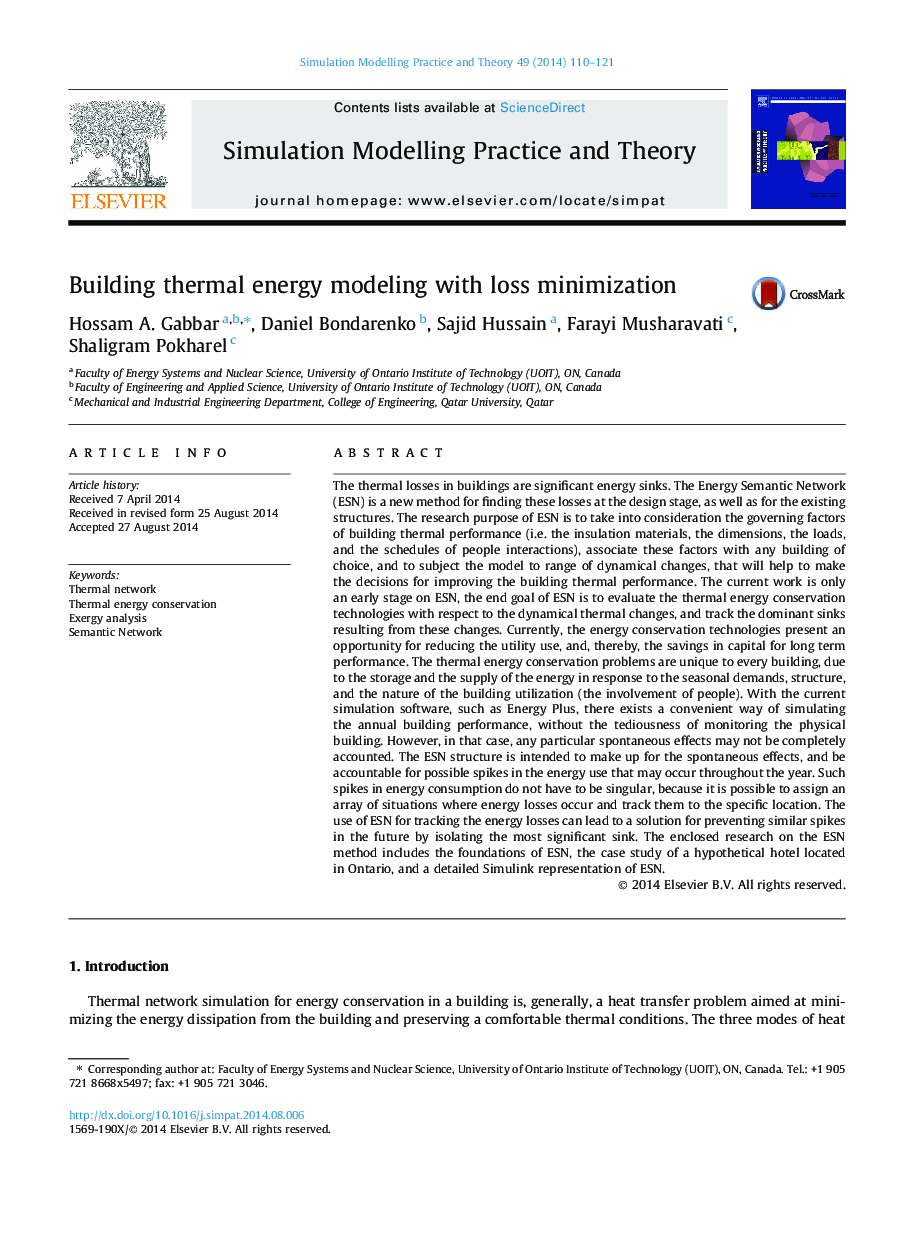| Article ID | Journal | Published Year | Pages | File Type |
|---|---|---|---|---|
| 6902848 | Simulation Modelling Practice and Theory | 2014 | 12 Pages |
Abstract
The thermal losses in buildings are significant energy sinks. The Energy Semantic Network (ESN) is a new method for finding these losses at the design stage, as well as for the existing structures. The research purpose of ESN is to take into consideration the governing factors of building thermal performance (i.e. the insulation materials, the dimensions, the loads, and the schedules of people interactions), associate these factors with any building of choice, and to subject the model to range of dynamical changes, that will help to make the decisions for improving the building thermal performance. The current work is only an early stage on ESN, the end goal of ESN is to evaluate the thermal energy conservation technologies with respect to the dynamical thermal changes, and track the dominant sinks resulting from these changes. Currently, the energy conservation technologies present an opportunity for reducing the utility use, and, thereby, the savings in capital for long term performance. The thermal energy conservation problems are unique to every building, due to the storage and the supply of the energy in response to the seasonal demands, structure, and the nature of the building utilization (the involvement of people). With the current simulation software, such as Energy Plus, there exists a convenient way of simulating the annual building performance, without the tediousness of monitoring the physical building. However, in that case, any particular spontaneous effects may not be completely accounted. The ESN structure is intended to make up for the spontaneous effects, and be accountable for possible spikes in the energy use that may occur throughout the year. Such spikes in energy consumption do not have to be singular, because it is possible to assign an array of situations where energy losses occur and track them to the specific location. The use of ESN for tracking the energy losses can lead to a solution for preventing similar spikes in the future by isolating the most significant sink. The enclosed research on the ESN method includes the foundations of ESN, the case study of a hypothetical hotel located in Ontario, and a detailed Simulink representation of ESN.
Related Topics
Physical Sciences and Engineering
Computer Science
Computer Science (General)
Authors
Hossam A. Gabbar, Daniel Bondarenko, Sajid Hussain, Farayi Musharavati, Shaligram Pokharel,
